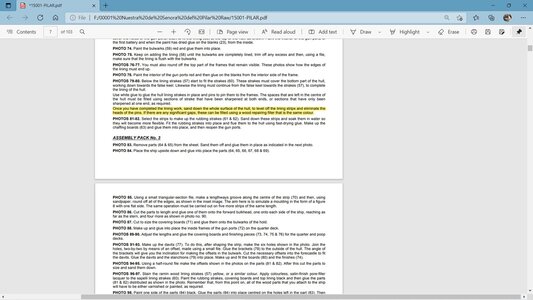The instruction set for my OcCre Nuestra Senora del Pilar, says when planking, pin the strakes with the pins provided. Then later to sand the hull and eliminate the heads of the pins with the sanding. Has anyone tried this? The pins are steel (brass plated - the are magnetic) and would leave a steel shaft tip not a brass tip. I am currently planking with glue only and my thoughts are that I could add pure brass pins later, and pre-drilling for each. The brass would be soft and easy to level. What are your thoughts?









